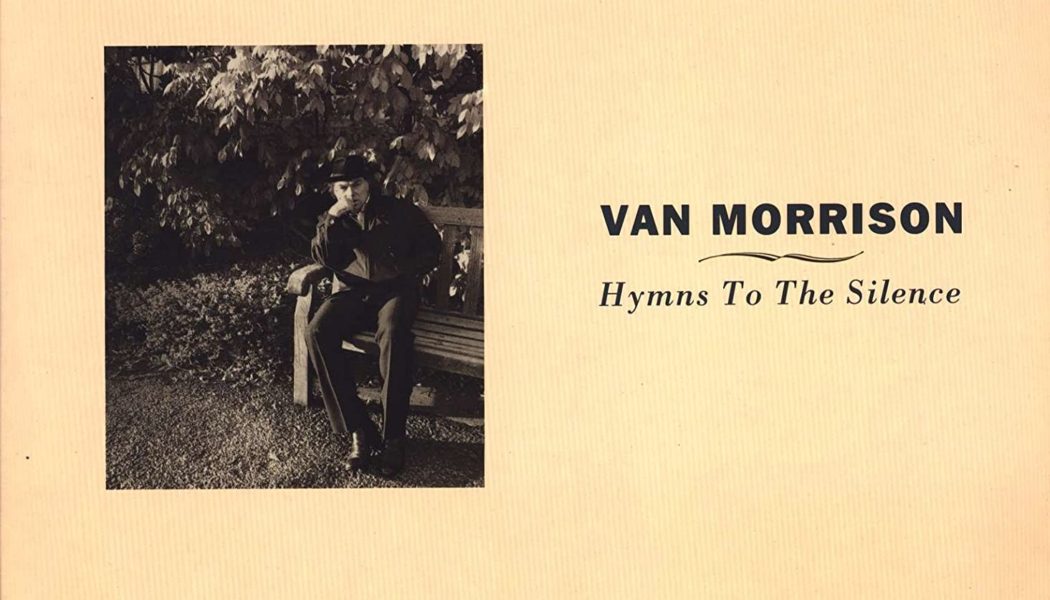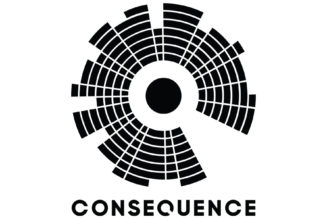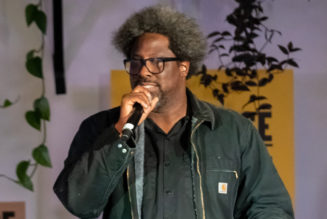I walked into Rhino Records in New Paltz, New York on September 24, 1991, with one mission in mind: copping the new cassette by the Red Hot Chili Peppers. After months of reading about the band working on the follow-up to their 1989 breakthrough LP Mother’s Milk with Rick Rubin, the time was finally nigh.
Heading into the store after school, the metallic gray Rock and Roll Over-evoking cover art for Blood Sugar Sex Magick was staring right at me from the new releases shelf. I snatched up the cassette, along with Ceremony, the new Cult album, which had come out that day as well. I lumbered over to the counter and was greeted with a side-eye from the store manager as he surveyed my purchase choices.
“So you’re not getting Nevermind?” he asked.
“Huh?”
“The new Nirvana album,” he snapped. “You might as well get it now, cuz you’re gonna buy it in a month anyway.”
“I’m good for now with these, thanks.”
Of course, he was totally right. As soon as “Smells Like Teen Spirit” hit MTV’s Buzz Bin, I was hooked. I did wind up getting Nevermind as a Christmas gift that year, which saved me from any further shade by Rhino’s overseer.
Blood Sugar Sex Magik and Nevermind were not the only major releases to emerge from on September 24, 1991. Also dropping was The Low End Theory, A Tribe Called Quest’s sophomore masterpiece. It not only served as a refreshing alternative to the gangsta rap era but codified the creative partnership between hip-hop and jazz. To this day, it remains the only record to feature cameos from Busta Rhymes and Ron Carter.
Yet as massive as this quadrant of titles might have been for this most epic Tuesday, the likes of which has only been seen maybe once or twice ever since, they weren’t the only noteworthy releases that day. Following are eight other albums jockeying for shelf space the day I walked into Rhino and didn’t buy Nevermind.
Van Morrison
Hymns to the Silence (Polydor)
No one is likely to choose the new “Why Are You On Facebook?” over “Into The Mystic” as their favorite Van Morrison tune anytime soon. However, in 1991, the Irish icon came close to the magic of his Astral Weeks era. On the double-length Hymns to the Silence, Morrison created a Celtic soul-folk opus “more diverse than all nine [of his] ’80s albums put together,” as critic Alec Foege noted. This sprawling set features input from a cavalcade of guests, including pianist Georgie Fame, The Chieftains, future Prince saxophonist Candy Dulfer, Acoustic Alchemy keyboardist Terry Disley and original Sade drummer Dave Early, among others. Nobody under 30 was looking for this record on September 24, 1991. But for those who call themselves a Van fan in 2021, Hymns to the Silence, along with its immediate predecessors, 1989’s Avalon Sunset and 1990’s Enlightenment, define a very important phase in the singer’s 60-year career.
Kyuss
Wretch (Geffen)
It’s difficult to not succumb to Josh Homme’s full-tilt guitar playing on the first Kyuss LP Wretch, perhaps the most overlooked album in their brief but mighty catalog. It’s one of two albums to feature the lineup of current Queens of the Stone Age frontman Homme, singer John Garcia, drummer Brant Bjork and future Queens of the Stone Age bassist Nick Oliveri, all of whom are playing with a young hunger that deserves to be spoken of in the same context as the first albums by Danzig and Masters of Reality — especially hard chargers like “Son of a Bitch” and the brutal “Katzenjammer.” The whole Kyuss catalog is worth owning, but if you need a jumping-off point, let it be Wretch.
Primal Scream
Screamadelica (Sire)
As COVID-19 took so many beloved artists in 2020, from Adam Schlesinger to Charley Pride to John Prine to Fred the Godson, it’s important to remember those we’ve lost for reasons beyond the pandemic. One such great was English acid house pioneer Andrew Weatherall, who died in February 2020 of a pulmonary embolism at only 56. Weatherall was a key figure in bridging the gap between modern British dance music and rock ‘n’ roll with the ground-shattering third album from the UK group Primal Scream. Three decades to the day, Screamadelica continues to represent the creative pinnacle of the group’s seamless fusion of Stones-y sway and warehouse rave swagger. In October, Sony UK will put out Primal Scream’s Demodelica, a 16-track set of early demos and work-in-progress mixes, providing a behind-the-scenes glimpse into how the late Mr. Weatherall made these scrappy post-punks rave-ready.
Thompson Twins
Queer (Warner Bros.)
For their final album before metamorphosing into the more electronic sounds on Babble, The Thompson Twins continued to follow their creative heart on 1991’s Queer, which, like Primal Scream, led them to the bleeding edge of DJ culture in their native England. And in many ways, Queer perfectly parallels Screamadelica in the way by which both records utilize club atmosphere as a means of enhancing the funky modern rock construct Tom Bailey and Alannah Currie began upon signing to Warner Bros. Records in 1989. While the album didn’t yield any international smashes like “Hold Me Now,” the extensive workout “Come Inside” found success both on Billboard’s Dance chart and at gay clubs in the early ‘90s, while the deep cut “Strange Jane” was remixed as the instrumental “Play With Me” for the soundtrack to Ralph Bakshi’s 1992 film Cool World.
Pixies
Trompe le Monde (4AD/Elektra)
Trompe le Monde, the fourth and final album from the original Pixies lineup, is polarizing; it had longtime fans clutching their copies of Surfer Rosa and Doolittle a little closer on release day. But for kids who weren’t in college during the late 80s, Trompe le Monde was a revelation. Yes, Kim Deal’s presence on this record was minimal, resulting in people tossing it off as the unofficial first Black Francis/Frank Black solo album. Yet, despite the pendulum swing of its rank on personal lists, the fact is TLM remains the loudest, most feral Pixies LP the band ever made, with songs like “The Sad Punk,” “U-Mass” and a rowdy take on The Jesus and Mary Chain’s “Head On” unleashing all teeth and claws like a rabid honey badger.
Kid ‘N Play
Face The Nation (Select/Elektra)
After spending their career getting clowned by hip-hop snobs both in the press and on the mic, the final death blow for pop-rap duo Kid ‘N Play came when their third and final album was released against A Tribe Called Quest’s The Low End Theory — not to mention a glut of stellar alt-rock LPs. No one’s likely to replace the first Cypress Hill or Ice Cube’s Death Certificate with Face The Nation at the, um, house party. But the record is not a total write-off; hidden in the mix are a pair of Pete Rock-produced tracks (“Next Question,” “Bill’s At The Door”) that really allow the Christophers — Reid and Martin — to put in that work. If they had Pete produce the whole album, I guarantee it would have gotten just as much talk as Low End Theory. Well, at least in the context of September 24, 1991.
Prong
Prove You Wrong (Epic)
The same day such genre-altering classics as Nevermind and The Low End Theory dropped came a record that surely influenced the sound of such “nu-metal” kings as KoRn, Limp Bizkit and Linkin Park. That pummeling record was Prove You Wrong from New York City groove-metal pioneers Prong, led by former CBGB sound engineer and current Danzig guitarist Tommy Victor. It was here on this third LP where the band’s concept would fully come to fruition, as samples and funkier rhythms collide with the band’s hardcore-informed spin on NYC thrash. There’s even a cover of the Stranglers’ “(Get A) Grip (On Yourself).” Plus, Prove You Wrong is the only Prong album to feature the rhythm section of future Dirtbombs bassist Troy Gregory and Godflesh/Jesu drummer Ted Parsons, of whom played in Swans as well.
The Cult
Ceremony (Sire)
As illustrated above, my decision to choose the Cult’s Ceremony over Nevermind has weighed heavy on my head these last 30 years. Until, however, I recently picked up a CD version of the anticipated follow-up to The Cult’s breakout classic Sonic Temple for cheap at my neighborhood record shop. Giving it an honest listen for the first time in about 30 years proved that while it might not be the best Cult album, it’s undoubtedly the most dynamic. Ceremony was largely crafted by the original duo of Ian Astbury and Billy Duffy after drummer Matt Sorum left to join Guns ‘N Roses and bassist Jamie Stewart, who was the true heart of those first four Cult albums, retired from the road. However, with such heavy hitters as X-Pensive Winos bassist Charley Drayton, Benmont Tench on organ and keyboardist Scott Thurston of The Stooges onboard, the two original Cult-ists created their loosest, most freewheeling record. Produced by Richie Zito, the same guy who worked on the best Eddie Money LP, 1986’s Can’t Hold Back, Ceremony is definitely deserving of a second listen.

















![Who Should Skrillex Collaborate with on His Next Album? [POLL]](https://www.wazupnaija.com/wp-content/uploads/2020/07/who-should-skrillex-collaborate-with-on-his-next-album-poll-327x219.jpg)